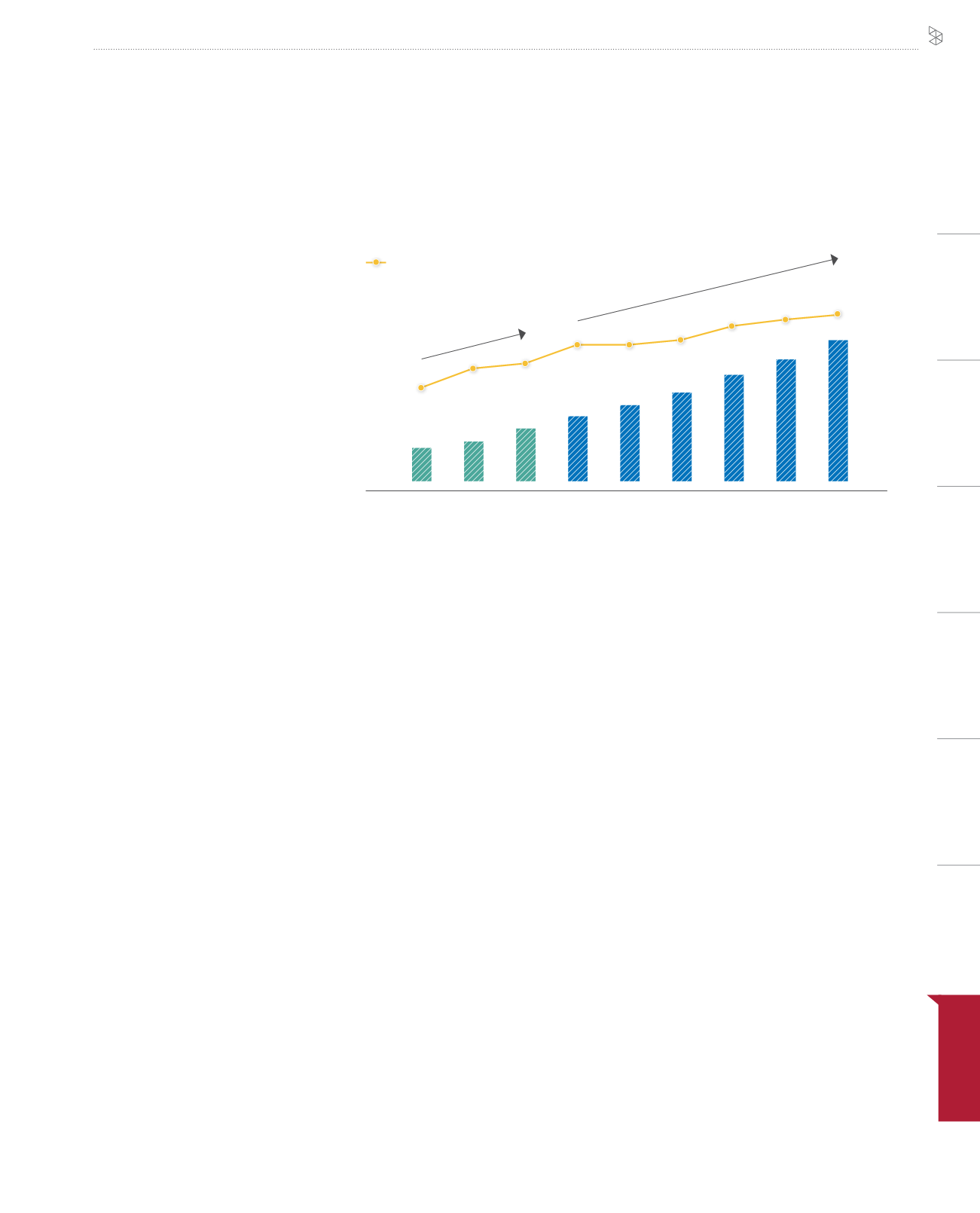

Introduction
NATIONAL
CONTRIBUTION REPORT
Beyond Short-
Term Profits
Nurturing People
Process Excellence
& Governance
Planet & Society
Our Associates
NATIONAL CONTRIBUTION REPORT 69
Axiata Group Berhad | Sustainability & National Contribution Report 2016
As a leading provider of connectivity
services in the country, Celcom has
been playing a key role supporting the
Government initiative through various
programmes including its Kampung Tanpa
Wayar (KTW) and Pusat Internet 1Malaysia
(Pi1M) programmes. Through KTW and
Pi1M, Celcom is bridging the digital divide
of the underserved communities, and
promoting greater use of technology and
digitisation.
Talent Development
Our efforts to develop talent in Malaysia
is delivered primarily through our Axiata
Young Talent Programme (AYTP), which
provides training and grooming to youths
at different stages of development. Celcom
also develops partnerships with relevant
education authorities such as the MoHE
to hold training classes on selected topics.
In 2016, Celcom collaborated with MoHE
to develop greater entrepreneurship in
university students by providingworkshops
as well as by providing distribution access
through its e-commerce platform 11Street.
Celcom continues to be a keen participant
of the Government’s SL1M programme,
which is designed to provide fresh
graduates
with
practical
working
experience. SL1M trainees are taken by
Celcom to give them valuable exposure in
various aspects of the business. Successful
trainees may be offered full-time positions
upon the completion of the programme.
E-commerce
ICT is one of the most important
determinants for the rapid growth of
e-commerce which is being driven by
the rising growth of internet users,
online spending and adoption of new
technologies such as mobile wallets.
Celcom is contributing significantly to
Malaysia’s position as an e-commerce hub
by creating a secure ICT infrastructure for
vendors and consumers.
2020
2019
2018
2017
2016
2015
2014
2013
2012
RM (billion)
49
53
61
68
75
83
93
103
114
+12%
+11%
5.0%
5.4% 5.5%
5.9% 5.9%
6.0%
6.2%
6.3% 6.4%
as a % of total GDP
National eCommerce Strategic Roadmap
The Government of Malaysia launched the
National eCommerce Strategic Roadmap
in October 2016. The Roadmap highlights
the need to provide good and affordable
broadband and mobile phone penetration
for connectivity, physical infrastructure
and the widespread use of payment cards,
eWallets and mobile wallets for convenient
electronic payments.
The Roadmap forecasts that e-commerce’s
contribution to GDP will increase at a
CAGR of 11% from RM68 billion in 2015
to RM114 billion under a business-as-usual
scenario (see Figure 6).
ICT supports the implementation of the
Roadmap
Data from International Data Corporation
(IDC) indicates that total IT spending,
including infrastructure, software and
services, will grow by 3.3% to USD21.6
billion in 2017. This is expected to boost the
adoption of e-commerce. Key foundations
for this are strong internet penetration
(68%), and the 16 million Malaysians who
are already digital consumers.
Celcom has launched three new
e-commerce portals since 2013. They are
Bachabooku (an online store providing local
electronic books and magazines), Buzzaar
(an online specialty store that offers
delivery of popular regional specialties)
and Crescent (an Islamic lifestyle hub). The
portals are aligned with Celcom’s goal to
develop more online business avenues
as a key revenue pillar, and support the
development of a dynamic e-commerce
ecosystem in Malaysia.
Celcom is also the owner of 11street,
an optimised e-commerce platform
launched together with SK Planet Ltd, a
South Korean e-commerce company. This
initiative underlined Celcom’s expanding
digital services portfolio, and increased
revenue streams that would eventually
benefit customers, service providers
and content developers, as well as the
traditional brick-and-mortar merchants.
Figure 6: E-commerce contribution to GDP
Source: IDC Bullish on Malaysia’s digital economy potential, Enterprise Innovation, November 2016; Department of
Statistics Malaysia; National eCommerce Strategic Roadmap
NATIONAL CONTRIBUTION
REPORT









